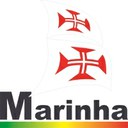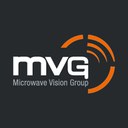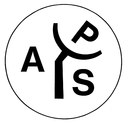Gap waveguides for mmWave antenna systems and electronic packaging
Per-Simon Kildal, Ashraf Uz Zaman
Chalmers University of Technology, Sweden
 Per-Simon Kildal (M’82-SM’84-F’95) has been Professor at Chalmers Uni-versity of Technology, Gothenburg, Sweden since 1989. He is now heading the Division of Antenna Systems at Department of Signals and Systems at Chalmers. Kildal has authored an antenna texbook, and more than 150 journal articles and letters, most of them in IEEE or IET journals. He has designed two very large antennas, including the Gregorian dual-reflector feed of the Arecibo radiotelescope. He has invented several reflector antenna feeds, the latest being the so-called “Eleven antenna”. Kildal is the originator of the concept of soft and hard surfaces, recently resulting in the gap waveguide, a new low-loss metamaterial-based transmission line advantageous in particular above 30 GHz. Kildal has received large individual grants from the Swedish research councile VR and from the European Research Councile ERC for research on gap waveguides.His research group has pioneered the reverberation chamber into an accurate measurement tool for antennas and wireless terminals subject to Rayleigh fading. This has been successfully commercialized in Bluetest AB. Prof Kildal received two best paper awards for articles published in the IEEE Transactions on Antennas and Propagation, and he was the recipient of the 2011 Distinguished Achievements Award of the IEEE Antennas and Propagation Society.
Per-Simon Kildal (M’82-SM’84-F’95) has been Professor at Chalmers Uni-versity of Technology, Gothenburg, Sweden since 1989. He is now heading the Division of Antenna Systems at Department of Signals and Systems at Chalmers. Kildal has authored an antenna texbook, and more than 150 journal articles and letters, most of them in IEEE or IET journals. He has designed two very large antennas, including the Gregorian dual-reflector feed of the Arecibo radiotelescope. He has invented several reflector antenna feeds, the latest being the so-called “Eleven antenna”. Kildal is the originator of the concept of soft and hard surfaces, recently resulting in the gap waveguide, a new low-loss metamaterial-based transmission line advantageous in particular above 30 GHz. Kildal has received large individual grants from the Swedish research councile VR and from the European Research Councile ERC for research on gap waveguides.His research group has pioneered the reverberation chamber into an accurate measurement tool for antennas and wireless terminals subject to Rayleigh fading. This has been successfully commercialized in Bluetest AB. Prof Kildal received two best paper awards for articles published in the IEEE Transactions on Antennas and Propagation, and he was the recipient of the 2011 Distinguished Achievements Award of the IEEE Antennas and Propagation Society.
 Ashraf Uz Zaman is an Assistant Professor at the Division of Antenna Systems at the Department of Signals and Systems at Chalmers University of Technology, Sweden. He received his MSc. and PhD from Chalmers University of Technology, Sweden in the year 2007 and 2013 respectively. His main research interest includes millimeter and sub millimeter waveguide technology, frequency selective surfaces, microwave passive components, RF packaging and integration techniques, high gain planar antennas etc. Over the past few years, he has been working extensively with the recently developed Gap waveguide technology and has published several journal articles and conference articles on this topic.
Ashraf Uz Zaman is an Assistant Professor at the Division of Antenna Systems at the Department of Signals and Systems at Chalmers University of Technology, Sweden. He received his MSc. and PhD from Chalmers University of Technology, Sweden in the year 2007 and 2013 respectively. His main research interest includes millimeter and sub millimeter waveguide technology, frequency selective surfaces, microwave passive components, RF packaging and integration techniques, high gain planar antennas etc. Over the past few years, he has been working extensively with the recently developed Gap waveguide technology and has published several journal articles and conference articles on this topic.
Ahmed A. Kishk
Concordia University, Canada
 Ahmed A. Kishk is a Professor and Canada Research Chair in Advanced Antenna System at Concordia University. He is a distinguish lecturer for the Antennas and Propagation Society (2013-2015). His research interest includes the areas of Dielectric resonator antennas, microstrip antennas, small antennas, microwave sensors, RFID antennas, Multi-function antennas, microwave circuits, EBG, artificial magnetic conductors, and phased array antennas. He is a coauthor of over 700 articles in Journal and international conferences, four books, three edited books, and over 15 book chapters. He has three articles outstanding paper awards. One of them is 2004 Microwave Prize. He is a recipient of several research and teaching awards on the regional level on 1997, 1998, 2001, 2005, and 2009. He received the Award of Distinguished Technical Communication for the entry of IEEE Antennas and Propagation Magazine; 2001. He also received The Valued Contribution Award for outstanding Invited Presentation from the Applied Computational Electromagnetic Society. He received 2013 Chen-To Tai Distinguished Educator Award of the IEEE Antennas and Propagation Society. In recognition “For contributions and continuous improvements to teaching and research to prepare students for future careers in antennas and microwave circuits, Dr. Kishk is a Fellow of IEEE since 1998, Fellow of Electromagnetic Academy, and Fellow of the Applied Computational Electromagnetic Society (ACES ). He is a member of several Technical Societies.
Ahmed A. Kishk is a Professor and Canada Research Chair in Advanced Antenna System at Concordia University. He is a distinguish lecturer for the Antennas and Propagation Society (2013-2015). His research interest includes the areas of Dielectric resonator antennas, microstrip antennas, small antennas, microwave sensors, RFID antennas, Multi-function antennas, microwave circuits, EBG, artificial magnetic conductors, and phased array antennas. He is a coauthor of over 700 articles in Journal and international conferences, four books, three edited books, and over 15 book chapters. He has three articles outstanding paper awards. One of them is 2004 Microwave Prize. He is a recipient of several research and teaching awards on the regional level on 1997, 1998, 2001, 2005, and 2009. He received the Award of Distinguished Technical Communication for the entry of IEEE Antennas and Propagation Magazine; 2001. He also received The Valued Contribution Award for outstanding Invited Presentation from the Applied Computational Electromagnetic Society. He received 2013 Chen-To Tai Distinguished Educator Award of the IEEE Antennas and Propagation Society. In recognition “For contributions and continuous improvements to teaching and research to prepare students for future careers in antennas and microwave circuits, Dr. Kishk is a Fellow of IEEE since 1998, Fellow of Electromagnetic Academy, and Fellow of the Applied Computational Electromagnetic Society (ACES ). He is a member of several Technical Societies.
Abstract
There is an emergent need for higher data rate related to upcoming wireless applications. Given the data rate, capacity and quality of service (QoS) requirements, this can only be possible if the vast unlicensed bandwidth available at mmWave frequencies can be utilized and all the technical hurdles at mmWave frequencies (above 30GHz) are solved in a cost-effective way. In terms of available bandwidth world-wide, flexible transmission rules, 60GHz is a boon from a system perspective. But RF designers have faced enormous challenges in simulation, design, integration, physical realization, packaging and test of the complete systems. The technical challenges are literally orders of magnitude more complex than 2.4GHz or 5GHz Wi-Fi systems of today.
In future, the industrial winners will be the companies that can provide the mmWave hardware at the lowest cost. This requires new waveguide and mmWave packaging technologies that are more cost-effective than normal rectangular waveguide technology, and is more power-efficient (lower losses) than PCB-based microstrip and coplanar waveguides. The gap waveguide technology has this potential.
The main advantages of the gap waveguide structure are as follows: Gap waveguide is a waveguide where EM wave can be guided and controlled even in an oversized parallel-plate structure. The waveguide can be realized without any requirement of metal contact between the upper metal surface and the lower surface, and thereby allowing cheap manufacturing of low-loss waveguide components at mmWave frequency bands or even higher. The relaxed mechanical requirements pave the way for low or moderate precision machining, lower fabrication time requirements and may even make possible the usage of some low cost fabrication techniques such as injection moulding, and plastic hot embossing.
This short course will contain an overview of the gap waveguide technology, the parallel-plate stopband design, some antenna designs based on gap waveguide technology and some RF subsystem design such as filters, packaging of RF electronics. This will give an opportunity for antenna specialists to start using and contribute to the development of this promising technology.
The course organization is as follows:
- An overview of soft and hard surface, Hard waveguides,
- Basic principle of Gap waveguide technology, Comparison of losses with other available Microwave technologies such as rectangular waveguide and microstrip lines.
- The importance of the design of the parallel-plate stopband using different types of periodic structures.
- High gain planar slot array antenna designs based on different gap waveguide configurations.
- RF sub-system designs such as filters and diplexer.
- RF packaging with Gap waveguide.


































